Sailing itself does not pose such a big problem for newcomers, at least that´s my impression. Although sails trim is a delicate matter and I often see yachts with a questionable outlook on their canvas, at least they are going somewhere. Judging from what I see (and more over, from what I hear) in parts that´s mostly berthing: People yell at each other, run around, throwing lines, jumping from boats … emotions are cooking high and mariages get damaged.
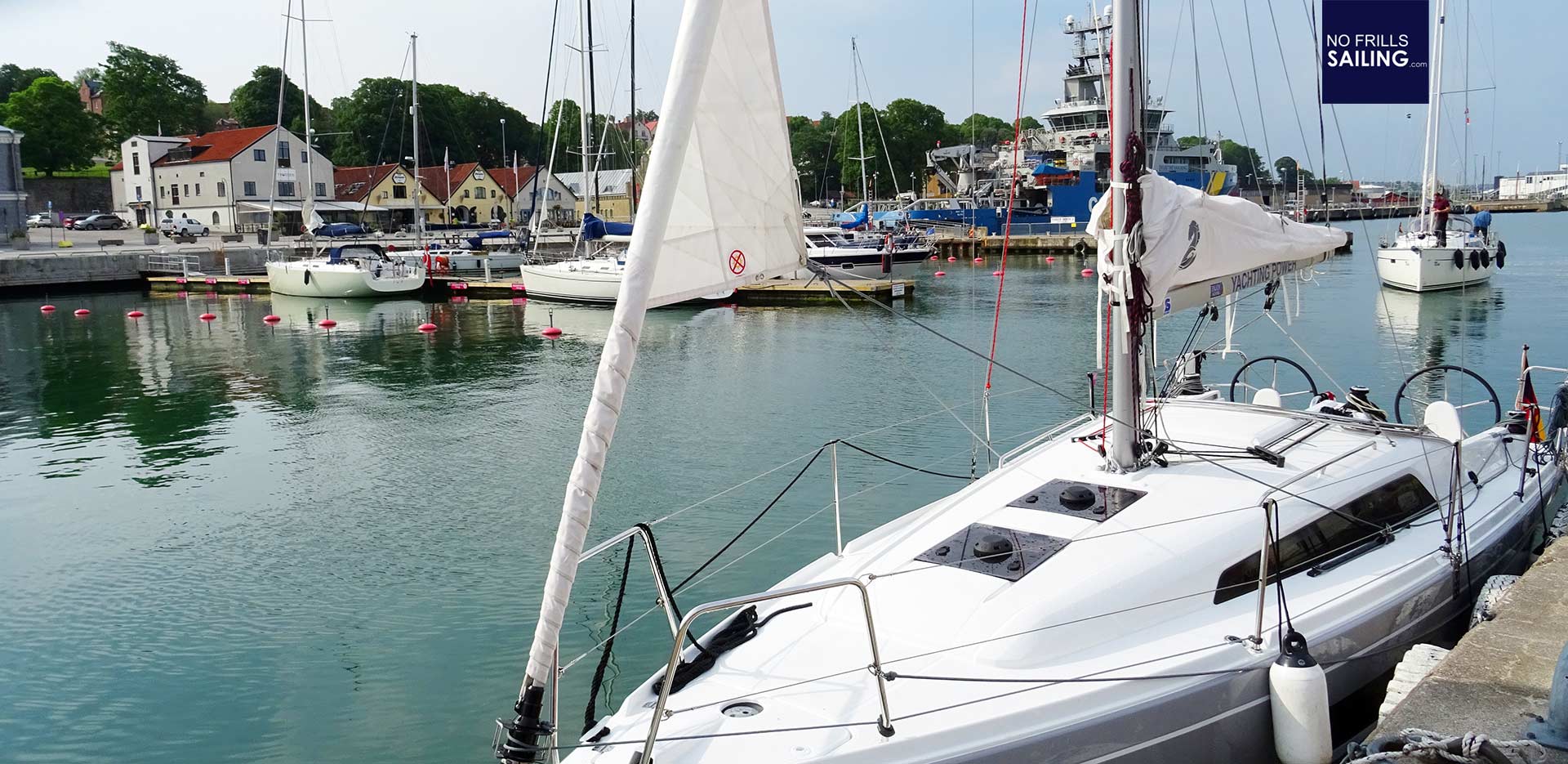
Last year during my unforgettable sailing experience aboard the Oceanis 30.1 prototype when I was sailing with German actor and dubbing director Martin May to Sweden, we at some point landed in Gotland, the mystical Island that was central to European and Baltc history for so long: After a night sailing through rough seas and thunderstorms, we instantly fell asleep. Waking up some hours later, weather hat again deteriorated, but it was fitting: A black shadow quietly and ever so slowly entered the harbor. It was the GOTLAND, Sweden´s most advanced AIP-submarine. And it began mooring exactly vis-à-vis our sailing yacht. Let´s see how the pros of the Swedish Navy are landing their boat …
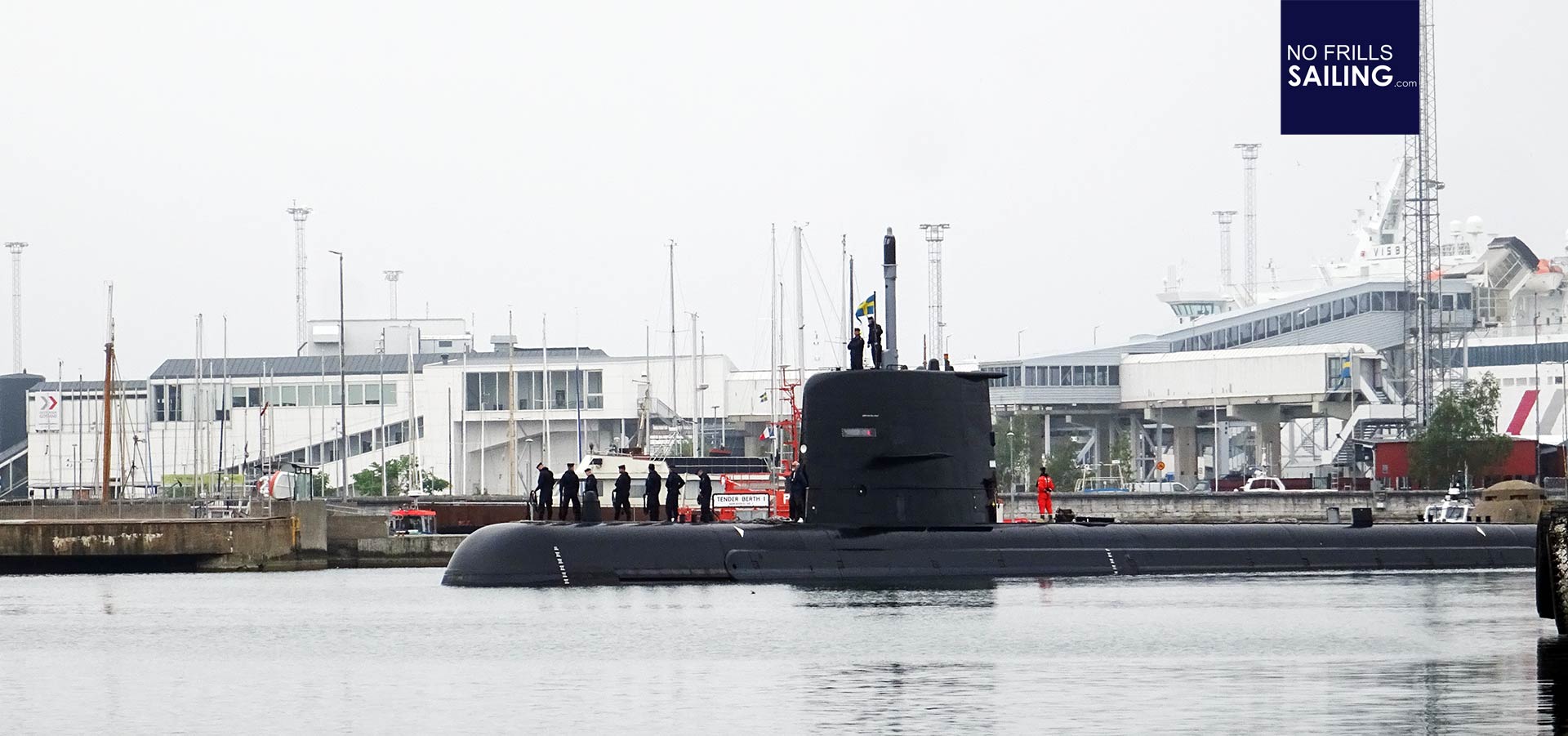
I grabbed my photocamera and wenta round the harbor where some hours earlier a large SAR cruiser had berthed. Now the whole jetty was empty. An Army jeep arrived and one (!) lonely soldier armed with a machinegun positioned himself on the jetty. No barriers, no police, no nothing. I was puzzled: This was Gotland´s ordinary yacht harbor, not a military installation. The sub came nearer and nearer, some more spectators arrived at the scene, eating sandwiches and shooting pics. Amazing! Now, let´s see and learn how to berth a submarine.
Berthing like the pros: How a submarine is moored
Apparently the GOTLAND didn´t had any secondary propulsion units like bow or stern thrusters because a rib arrived on the scene as well. It was a calm afternoon and no wind was apparent at all so the rib mostly stayed in waiting positions. Sailors went on deck, some 5 persons on the bow, another group to the stern. Bollards were driven out of the hull and lines got prepared.
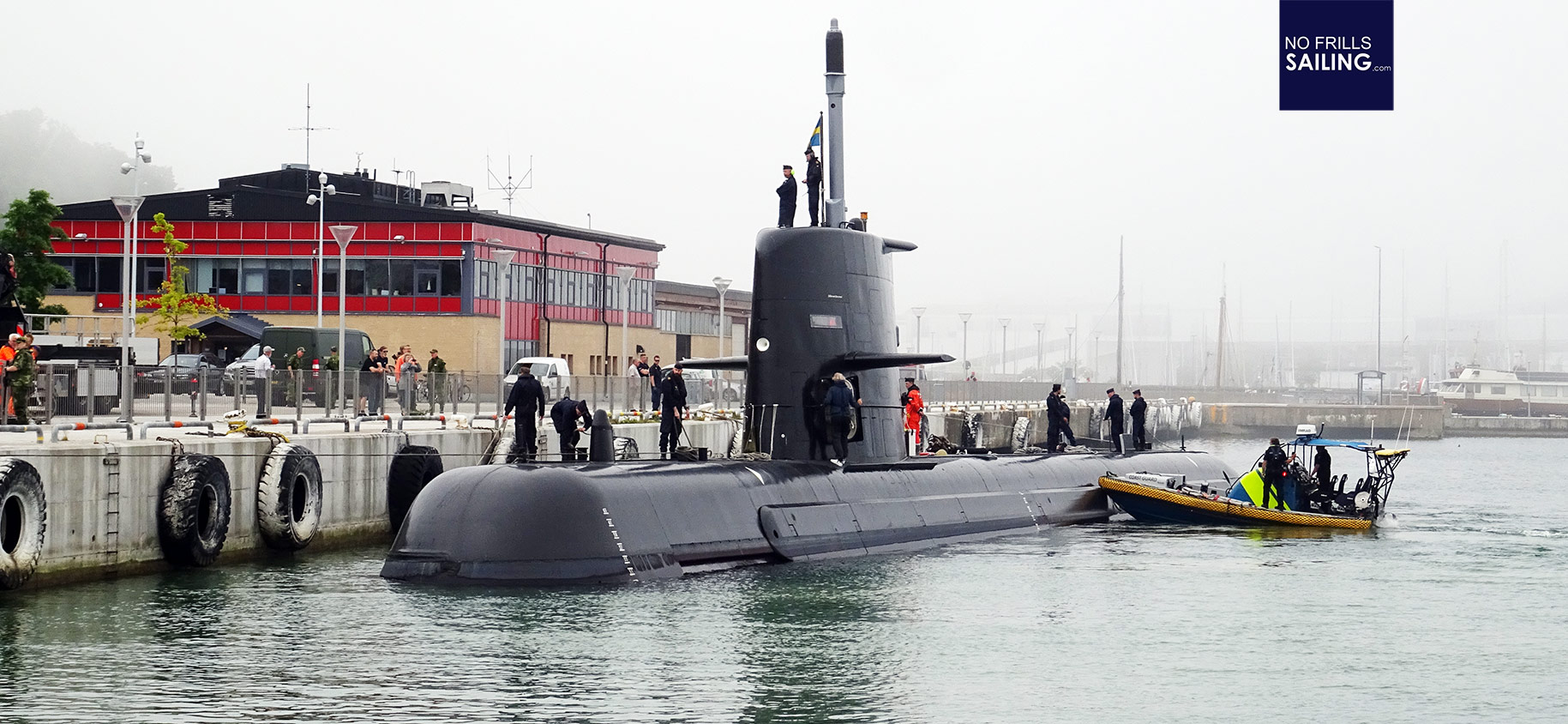
The boat slowly neared the quay wall, bow first. With an angle of some 30 degrees the boat came nearer and nearer when at some point the line was thrown to the land side and a military person put it over a land-bollard, threw it back. At this point, the crew put the line over a large winch (which was a bollard capable of moving) and now the boat pulled itself to the quay.
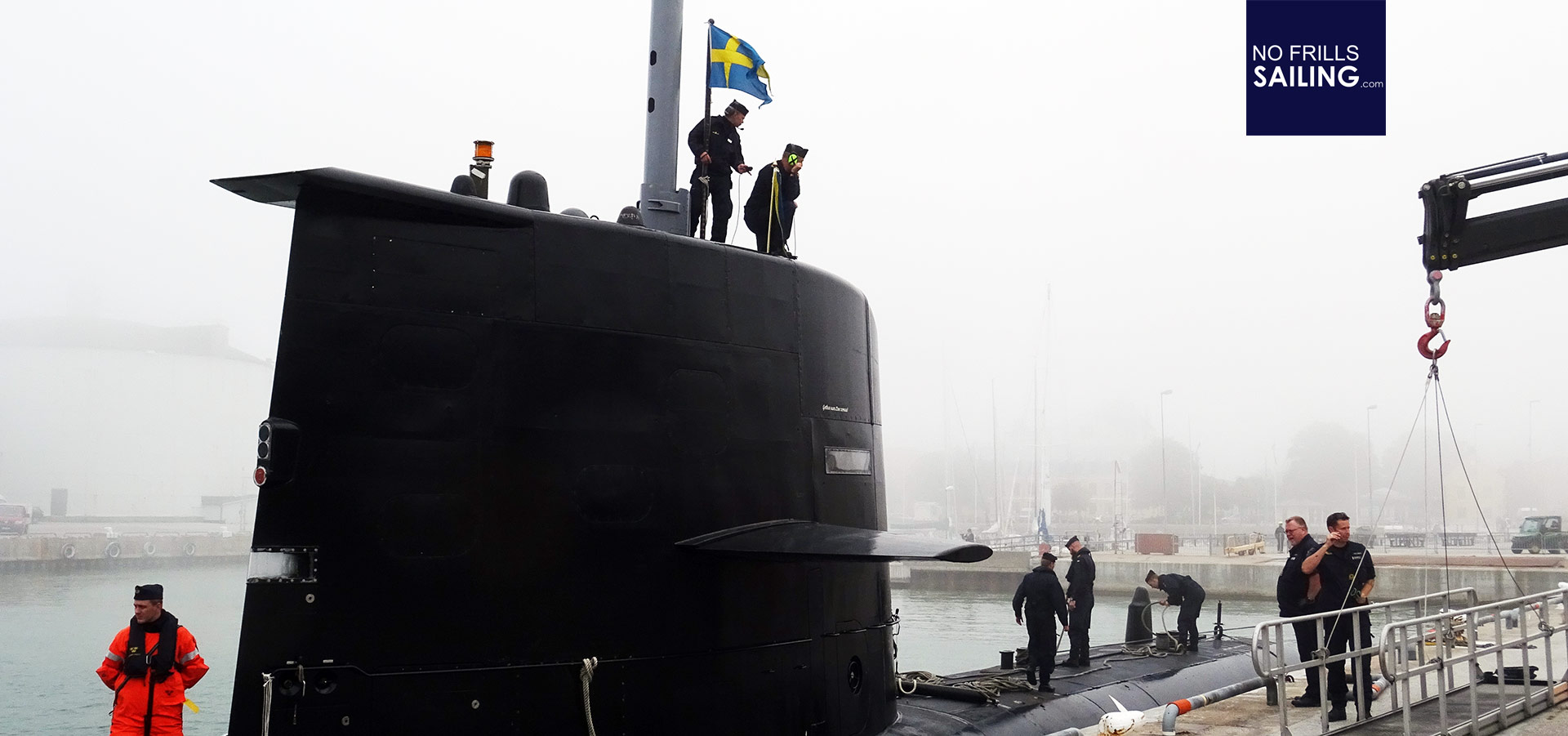
I heard absolutely nothing. Nobody was yelling, no one was screaming, running hastily around, jumping or loosing control. On the conning tower two officers oversaw the manoeuvre. One of them – maybe the First Officer – wore a headset and gave his commands to the Officers present on deck. Everything was precise, short and quick. At first the bow was secured by the bow line. The whole manoeuvre took at least 10 minutes to execute, mainly because they performed it very, very slowly: I guess they did not want to crash the boat into the concrete pontoon and damage the noise-dampening coating.
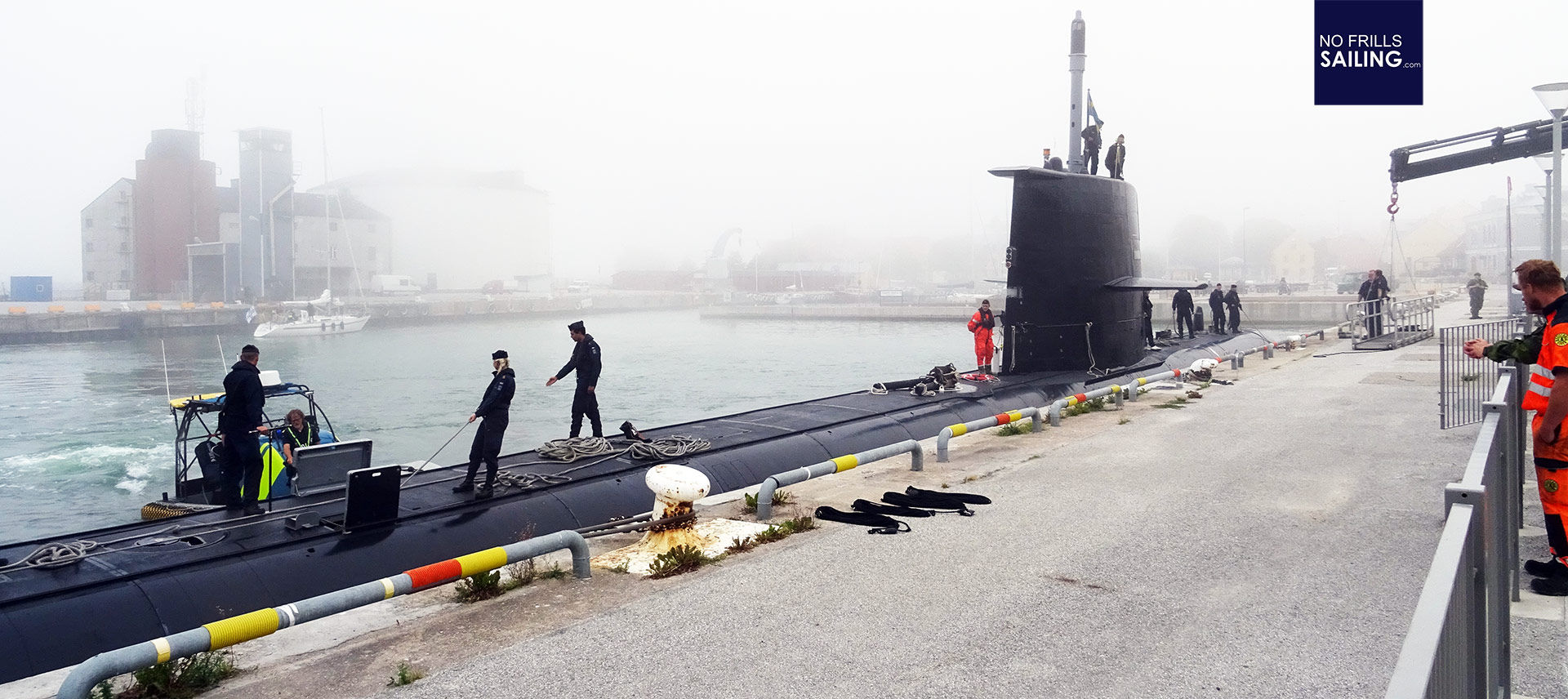
Now, as the boat´s bow was secure, the rib began to push the boat´s stern towards the pontoon ever so slowly. Again, a line was thrown over to the land to be put over a bollard. The whole thing started over with the exception that now the crew had to pull very hard to get the boat alongside. Again, one Officer oversaw the proceedings of his subordinates: No yelling, no pointing, no screaming. Professional work.
Learning from the pros
So, why am I writing about berthing a military vessel by a professional crew? Well, I would say as sailing yacht skippers we can learn something here. At first, take a look at the very first picture of this article: When the sub arrived in the harbor, everything was already prepared for the landing manoeuvre. All people on deck on their proper positions, lines ready, crew focused. How often do we see yachts arriving at the berth without anything ready? No wonder that hustle breaks out when mooring is imminent but no line available …! The second thing is communication: Apparently, all crew members knew exactly what to do. Sure, they haven´t been doing this for their first time, but as a skipper we may learn that telling your crew beforehand what you are going to do, in which way you are planning to land the boat and what you expect from every person to do is a way to avoid misunderstandings. And mistakes.
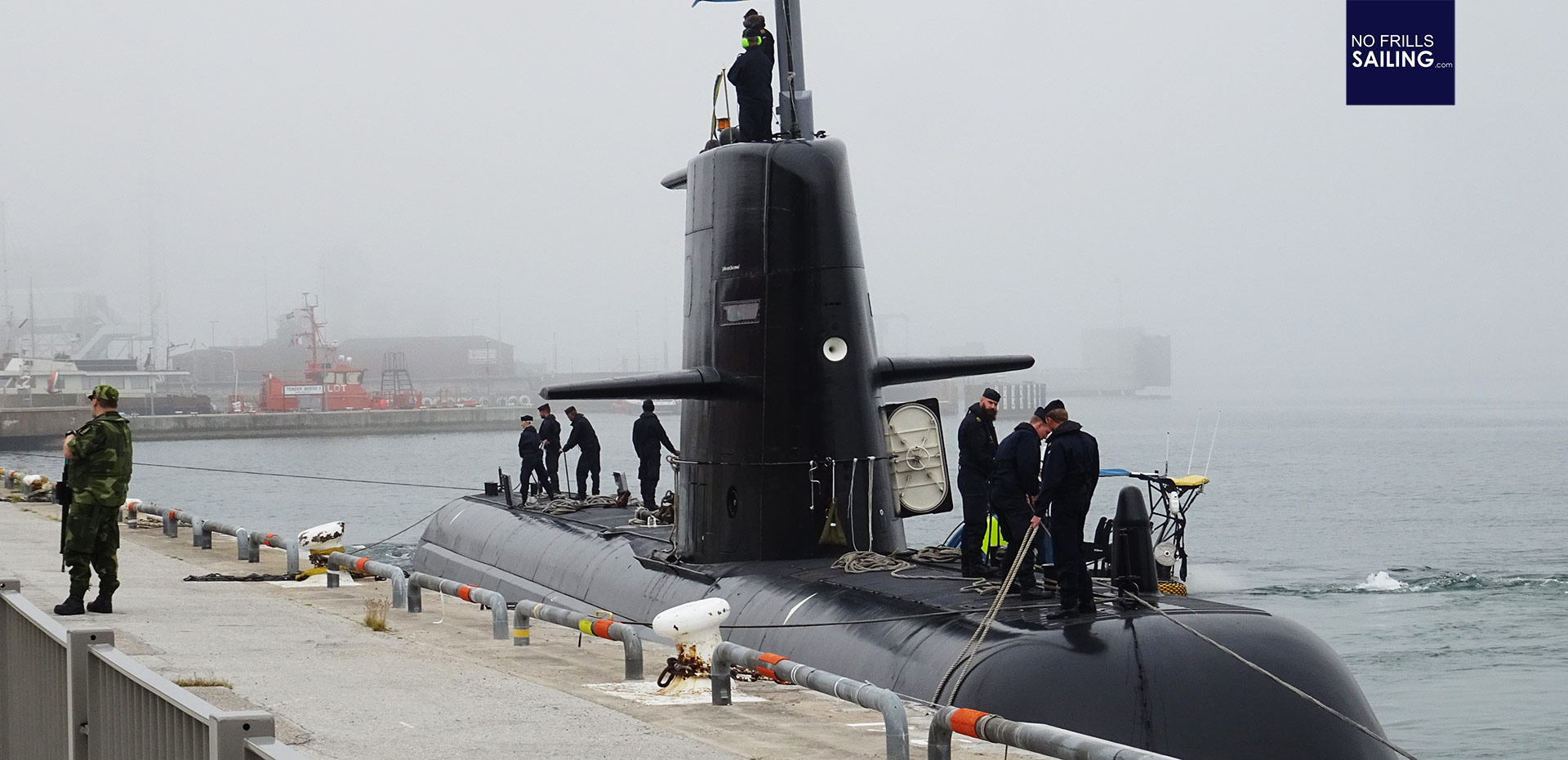
Last, third, but not least, yelling: Raising your voice, shouting, screaming – will always offend people. Sure, the sub-crew had VHF and headsets, but watching them communicating in a calm way surely contributed to a professional execution of the manoeuvre in a calm manner. I personally found it very, very interesting to see this modern submarine coming alongside and how a pro crew is managing the proceedings. I again watched and learned that communication is everything – before the manoeuvre and afterwards. Besides, watching a sub is always of great interest and satisfies the inner child in me.
Read other submarine-related articles:
How the movie “Das Boot” changed the actors profoundly
Meeting a brand new HDW-submarine on the Baltic Sea
All “Sailing Skills” articles
